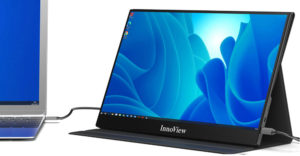
IBM is putting its heft behind a project that could morph into new way of doing business in Second Life, Linden Lab’s virtual 3-D community.
The two have partnered to build a protected enclave in Second Life where the company can conduct serious business without fear of marauders. While there are more than 100 corporate storefronts in the virtual community, none operate behind a firewall.
Now, though, IBM employees — or rather, their avatars — can collaborate and communicate in a secure Second Life zone. And once their sensitive business transactions are complete, they can leave IBM’s cordoned-off workspace to join the rest of the community.
No Hurdles to Clear
The point is to provide a seamless experience for IBM employees, Ginsu Yoon, VP of business affairs at Linden Lab, told LinuxInsider.
“The challenge was to provide for communication and data-sharing but also allow for interaction with the rest of the Second Life grid,” he said.
There’s nothing terribly fancy about the technology the two companies came up with, according to Yoon. Right now, a pilot project is running the Second Life platform on IBM servers, behind an IBM firewall.
“It was just a question of putting the time and effort into the deployment and architecture,” he noted.
By the end of the year, the two firms will offer the same service to other companies.
Safety and Education
There’s been demand for such a solution — if not on Second Life then elsewhere in the Web 2.0 universe — and the District of Columbia’s chief technology officer, Vivek Kundra, has been among those clamoring for it.
Kundra has begun talking with IBM about the possibility of using 3-D virtual technology for some of the district’s collaborative functions, he told LinuxInsider. Whether those activities will take place in Second Life or another virtual space is yet to be determined.
In any case, Kundra is convinced Second Life will be a major force in corporate and government modeling in the future.
There could be significant value, for instance, in migrating DC’s public safety functions to a 3-D community. Education is another possibility, he said.
In fact, the possibilities are endless, Kundra continued. Even mundane chores such as correlating the number of government employees sitting close to printers can yield new data points in 3-D, for example.
“I see this as a huge business intelligence opportunity that is hidden and just waiting to be discovered,” he remarked.
Build Your Own World
Leaving aside the more complex modeling scenarios that Kundra envisions, Second Life offers intriguing possibilities to businesses — who are likely to become more interested if they know their communications are secure.
One advantage of the platform is that you can create your own world with your own set of rules, explained Hyun-Yeul Lee, an assistant professor at Boston University.
Second Life’s interface lacks intuitive designs to navigate the space, she told LinuxInsider. “However, IBM can build its own ways of navigation and communication using the Second Life platform, [tailoring] it to its needs and branding.”
The value Second Life brings to governments and companies, Lee continued, is that it enables viewing and exchanging information in a different way — through a rich 3-D virtual world as opposed to a flat 2-D interface.
“In this scenario, it is required that participants congregate in the same virtual space and time — or that information can be retrieved in that virtual space over time, depending on how they set the rules. There may even be better understanding of context of a meeting situation, for example, through expressing and observing participant’s gestures,” she pointed out.
Securing corporate space is the logical and smart next move for Second Life, said Brent Britton, an attorney with Squire, Sanders & Dempsey and author of several articles on emerging legal issues in Second Life.
“Prior to what IBM has done, Second Life was largely open to all — there were some security measures you could take to prevent other users from getting into your space but the fact is, everyone was on the same server,” he said.
Allowing companies to wall off some of their activities will result in a stronger community, Britton told LinuxInsider.






















































Good, hopefully IBM will keep its little fantasy geek enclave behind its firewall and let the rest of us conduct serious business without the aid of avatars and make-believe furniture.
This might be the future of business for techies, but thankfully it isn’t the future of business for those of us making a living in First Life.